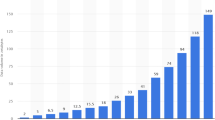Abstract
While cloud-based BPM (Business Process Management) shows potentials of inherent scalability and expenditure reduction, such issues as user autonomy, privacy protection and efficiency have popped up as major concerns. Users may have their own rudimentary or even full-fledged BPM systems, which may be embodied by local EAI systems, at their end, but still intend to make use of cloud-side infrastructure services and BPM capabilities, which may appear as PaaS (Platform-as-a-Service) services, at the same time. A whole business process may contain a number of non-compute-intensive activities, for which cloud computing is over-provision. Moreover, some users fear data leakage and loss of privacy if their sensitive data is processed in the cloud. This paper proposes and analyzes a novel architecture of cloud-based BPM, which supports user-end distribution of non-compute-intensive activities and sensitive data. An approach to optimal distribution of activities and data for synthetically utilizing both user-end and cloud-side resources is discussed. Experimental results show that with the help of suitable distribution schemes, data privacy can be satisfactorily protected, and resources on both sides can be utilized at lower cost.
Similar content being viewed by others
References
Turner M, Budgen D, Brereton P. Turning software into a service. IEEE Computer, 2003, 36(10): 38–44.
Foster I, Iamnitchi A. On death, taxes, and the convergence of peer-to-peer and grid computing. In Proc. the 2nd International Workshop on Peer-to-Peer Systems (IPTPS 2003), Berkeley, USA, Feb. 20–21, 2003, pp.10–17.
Armbrust M, Fox A, Griffith R et al. Above the clouds: A Berkeley view of cloud computing. UCB/EECS-2009-28, EECS Department, University of California, Berkeley, 2009, http://www.eecs.berkeley.edu/Pubs/TechRpts/2009/EECS-2009-28.html.
Wil M. P. van der Aalst, Arthur H. M. ter Hofstede, Mathias Weske. Business process management: A survey. In Proc. Int. Conf. Business Process Management, Eindhoven, The Netherlands, Jun. 26–27, 2003, pp.1–12.
Krafzig D, Banke K, Slama D. Enterprise SOA: Service-Oriented Architecture Best Practices. Prentice Hall PTR. Upper Saddle River, NJ, USA, 2004, pp.1–17.
Oracle BPM. August 2009, http://www.oracle.com/technologies/bpm/index.html.
Microsoft BizTalk server business process management. Aug. 2009, http://www.microsoft.com/biztalk/en/us/bpm.aspx.
IBM - WebSphere business process management. Oct. 2009, http://www.ibm.com/software/websphere/products/businessint/.
JBoss jBPM. October 2009, http://jboss.com/products/jbpm.
BPEL Open Source Engine. October 2009, http://www.activevos.com/community-open-source.php.
Open source Java XPDL workflow. Oct. 2009, http://shark.enhydra.org/.
Buyya R, Yeo C S, Venugopal S. Market-oriented cloud computing: Vision, hype, and reality for delivering IT services as computing utilities. In Proc. the 10th Int. Conference on High Performance Computing and Communications (HPCC-08), Los Alamitos, USA, Sept. 25–27, 2008, pp.5–13.
IBM — BPM BlueWorks: BPM working in the cloud. Sept. 2010, https://apps.lotuslive.com/bpmblueworks/.
Microsoft SharePoint online, business productivity online suite. Oct. 2009, http://www.microsoft.com/online/sharepoint-online.mspx.
VitriaCloud M3O in the cloud. October 2009, http://vitria-cloud.com/site/.
Bertino E, Paci F, Ferrini R. Privacy-preserving digital identity management for cloud computing. IEEE Data Eng. Bull, 2009, 32(1): 21–27.
Bowers S, Ludascher B, Ngu A H H, Critchlow T. Enabling scientific workflow reuse through structured composition of dataflow and control-flow. In Proc. the 22nd Int. Data Engineering Workshops (ICDEW 2006), Atlanta, USA, Apr. 3–7, 2006, pp.70–76.
Google App engine. October 2009, http://appengine.google.com/.
Extensible messaging and presence protocol (XMPP): Core. Oct. 2009, http://www.ietf.org/rfc/rfc3920.txt.
Jabber ID. Oct. 2009, http://www.jabber.org/index.php/faq/#jid.
Wagener J, Spjuth O, Willighagen E L, Wikberg J ES. XMPP for cloud computing in bioinformatics supporting discovery and invocation of asynchronous Web services. In BMC Bioinformatics, 2009, 10(1): 279.
Genetic Algorithm. Oct. 2009, http://en.wikipedia.org/wiki/Genetic_algorithm.
JGAP: Java genetic algorithms package, Oct. 2009, http://jgap.sourceforge.net/.
Yu J, Buyya R, Tham C K. Cost-based scheduling of scientific workflow application on utility grids. In Proc. the 1st Int. Conf. e-Science and Grid Computing (e-Science 2005), Melbourne, Australia, Dec. 5–8, 2005, pp.140–147.
Singh G, Kesselman C, Deelman E. A provisioning model and its comparison with best-effort for performance-cost optimization in grids. In Proc. the 16th Int. High Performance Distributed Computing Symp. (HPDC 2007), Monterey Bay, USA, Jun. 27–29, 2007, pp.117–126.
Deelman E, Singh G, Livny M et al. The cost of doing science on the cloud: The Montage example. In Proc. the ACM/IEEE Conference on High Performance Computing (SC 2008), Austin, USA, Nov. 15–21, 2008, pp.1–12.
F. John Krautheim. Private virtual infrastructure for cloud computing. In Workshop on Hot Topics in Cloud Computing (HotCloud 2009), San Diego, USA, Jun. 14–19, 2009, pp.10–17.
Han Y, Geng H, Li H, Xiong J et al. A visual and personalized business-level composition language for chaining Web-based services. In Proc. the 1st International Conference on Service Oriented Computing (ICSOC 03), Trento, Italy, Dec. 15–18, pp.165–177.
Wang J, Zhang L Y, Han Y B. Client-centric adaptive scheduling of service-oriented applications. Journal of Computer Science and Technology, 2006, 21(4): 537–546.
Li H F, Han Y B, Hu S L. An approach to constructing service-oriented and event-driven application dynamic alliances. Chinese Journal of Computers, 2005, 28(4): 739–749. (in Chinese)
Author information
Authors and Affiliations
Corresponding author
Additional information
Supported by the National Basic Research 973 Program of China under Grant No. 2007CB310805, the National Natural Science Foundation of China under Grant Nos. 90412010, 60970131 and 60903048, the National High-Tech Research and Development 863 Program of China under Grant No. 2006AA01A106 and the Beijing Natural Science Foundation under Grant No. 4092046.
Rights and permissions
About this article
Cite this article
Han, YB., Sun, JY., Wang, GL. et al. A Cloud-Based BPM Architecture with User-End Distribution of Non-Compute-Intensive Activities and Sensitive Data. J. Comput. Sci. Technol. 25, 1157–1167 (2010). https://doi.org/10.1007/s11390-010-9396-z
Received:
Revised:
Published:
Issue Date:
DOI: https://doi.org/10.1007/s11390-010-9396-z




